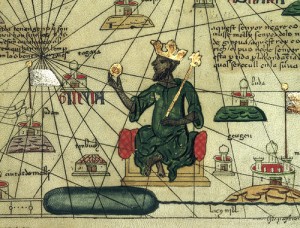Although a majority of the media’s focus on Sudan revolves around the war between the north and south, there still remains a large amount of hidden, unappreciated beauty to the country of Africa.
Amongst the northeast region of Africa, Sudan is commonly characterized as the largest country of the continent, measuring 2,505,813 sq km, 853 km of it being composed of the Red Sea. Even with the Nile river running through the country, Sudan’s deserts are destined to periodic droughts and dust storms. The mountains of the north promise enjoyable weather, getting even better by traveling south to beautiful tropical climates. Sudan has almost any type of region one may want to visit. In the north lays the desert, trailed by mountains and valleys in the center areas. Swamps and rainforests compose the south, offering any type of desire setting of terrain. Traveling to Khartoum, the National Museum takes visitors to the monumental history of ancient Egypt.
Aside from it’s natural beauty, Sudan’s oil production promised large supply, becoming a direct source of oil to a majority of bordering countries. This helps maintain a healthy economy and increasing exchange rate. Other natural resources found in Sudan consist of copper, chromium ore, petroleum, zinc, iron, silver, and gold.
Unfortunately, the amount of visitors Sudan has had in the last few decades has decreased in relation to the war between the north and south. In contrast to the conflict between the people of the north and south of Sudan to one another, the people of Sudan are very well known as being extremely warm and hospitable to any and all visitors. Residents will often invite others into their homes for food and offer plenty of food, shelter, and kindness to any visiting.
Sudan impressingly has its very own currency. The Sudanese pound replaces the pound at an exchange rate of 1 dinar for 10 pounds. Aside from the separated south, the new Sudanese pound became the official currency of the country.
Since sports isn’t a huge part of Sudanese culture, no one is aware of several successful athletes to come out of the country. Manute Bol, who in his era was the tallest basketball player in the NBA, made a huge name for himself in basketball, along Deng Gai and Luol Deng. Gai went to play for the Philadelphia 76ers, while Deng joined the Chicago Bulls.
Amongst movements, between 1960 and 1970, Sudanese woman had one of the first and most active women’s movements in Arabic and African history. The first female parliamentarian took rise in 1965, followed by the first female minister of health in 1974, the Middle East’s first female judge, cinematographer, football referee, army, and police officer.
My initial assumption about Sudan came from the very obvious knowledge that they are in war and separated from south Sudan. I constantly came across articles, current events, and history records of wars and strife from Sudan. After researching the history and facts of the country, I’ve learned how beautiful and unique the country truly is, and how much it has to offer. Although Sudan faces many negative assumptions, it is a country that still offers itself to Africa and contributes as a huge historical source for themselves.
Images (Again):
http://www.newspatrolling.com/wp-content/uploads/Sudan-Darfur2008-_piramidi-_contesto-_COSV_7.jpg
http://www.ccbnational.net/KotW/img/scenic_photos/Sudan/Sudan%20-%20towers%20of%20sudan.jpg
http://gmsudan.com/wp-content/uploads/2010/09/Tourism-in-Sudan-1.jpg












